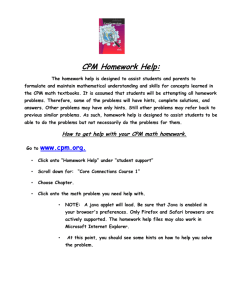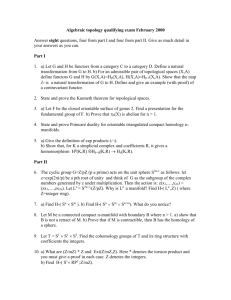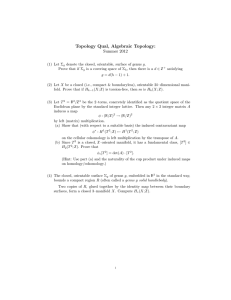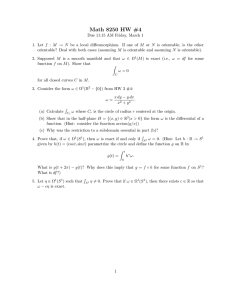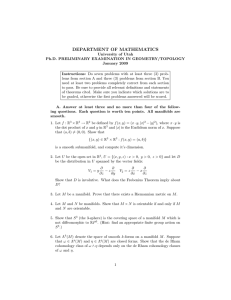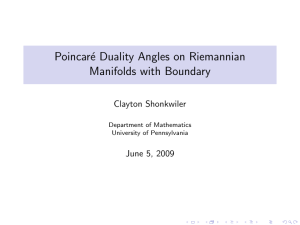1. Let M that H
advertisement
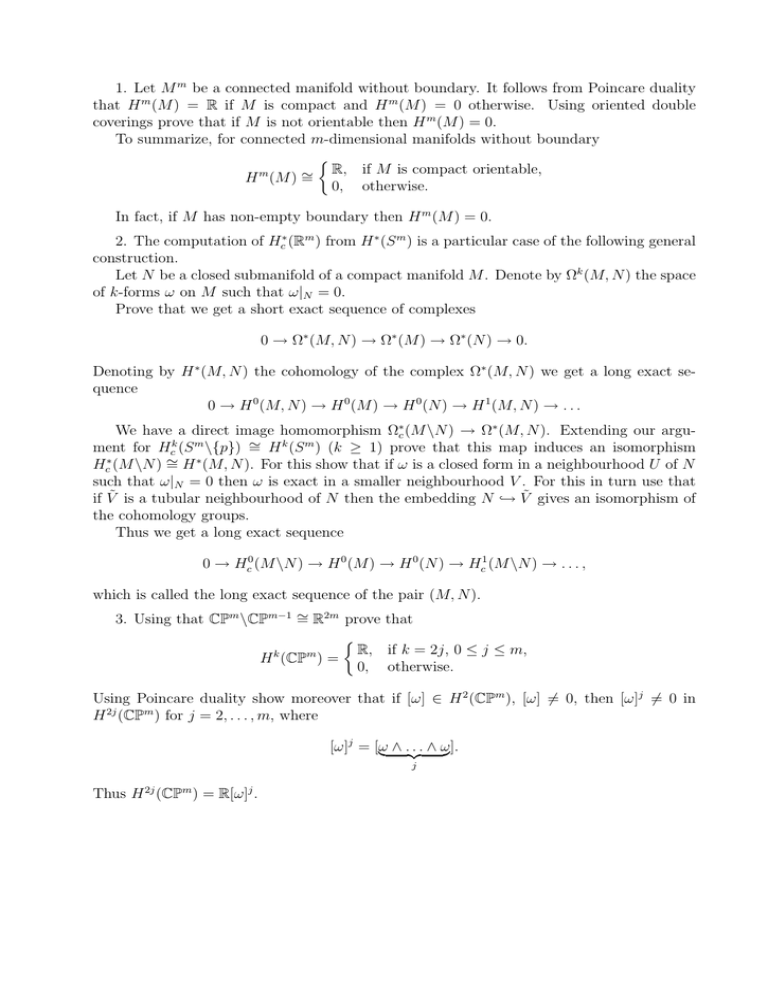
1. Let M m be a connected manifold without boundary. It follows from Poincare duality
that H m (M ) = R if M is compact and H m (M ) = 0 otherwise. Using oriented double
coverings prove that if M is not orientable then H m (M ) = 0.
To summarize, for connected m-dimensional manifolds without boundary
R, if M is compact orientable,
m
∼
H (M ) =
0, otherwise.
In fact, if M has non-empty boundary then H m (M ) = 0.
2. The computation of Hc∗ (Rm ) from H ∗ (S m ) is a particular case of the following general
construction.
Let N be a closed submanifold of a compact manifold M . Denote by Ωk (M, N ) the space
of k-forms ω on M such that ω|N = 0.
Prove that we get a short exact sequence of complexes
0 → Ω∗ (M, N ) → Ω∗ (M ) → Ω∗ (N ) → 0.
Denoting by H ∗ (M, N ) the cohomology of the complex Ω∗ (M, N ) we get a long exact sequence
0 → H 0 (M, N ) → H 0 (M ) → H 0 (N ) → H 1 (M, N ) → . . .
We have a direct image homomorphism Ω∗c (M \N ) → Ω∗ (M, N ). Extending our argument for Hck (S m \{p}) ∼
= H k (S m ) (k ≥ 1) prove that this map induces an isomorphism
Hc∗ (M \N ) ∼
= H ∗ (M, N ). For this show that if ω is a closed form in a neighbourhood U of N
such that ω|N = 0 then ω is exact in a smaller neighbourhood V . For this in turn use that
if Ṽ is a tubular neighbourhood of N then the embedding N ,→ Ṽ gives an isomorphism of
the cohomology groups.
Thus we get a long exact sequence
0 → Hc0 (M \N ) → H 0 (M ) → H 0 (N ) → Hc1 (M \N ) → . . . ,
which is called the long exact sequence of the pair (M, N ).
3. Using that CPm \CPm−1 ∼
= R2m prove that
k
m
H (CP ) =
R, if k = 2j, 0 ≤ j ≤ m,
0, otherwise.
Using Poincare duality show moreover that if [ω] ∈ H 2 (CPm ), [ω] 6= 0, then [ω]j 6= 0 in
H 2j (CPm ) for j = 2, . . . , m, where
[ω]j = [ω
. . ∧ ω}].
| ∧ .{z
j
Thus H 2j (CPm ) = R[ω]j .
